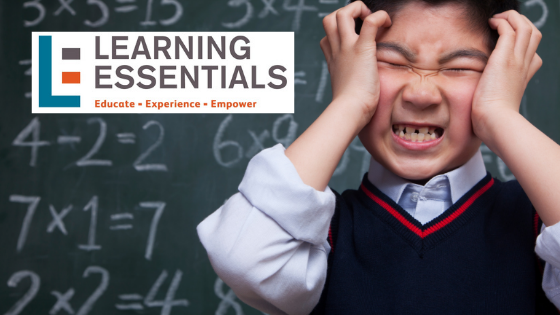Visualization as a Cognitive Tool Pt. I
Visualization as a learning strategy is most commonly seen in the language arts department. Teachers may prompt students to visualize what is happening in the text to boost comprehension and recall before, during, and after reading. This is a proven, worthwhile technique, especially for struggling readers and those with attention difficulties. However, there are numerous other ways in which educators can use visualization and visual tools to enhance learning opportunities that span far beyond the “try to picture or visualize what is happening” cue.
Visual Awareness
Some students, especially those with attentive or behavioral issues, often find that they are most successful when educational tasks encourage the use of spatial areas of the brain, as opposed to linguistic areas. To initiate visualization processes, teachers and parents can practice many different strategies, across any content area.
Math
Because mathematics can often involve complex, abstract, nebulous concepts and values, even grasping a math question can be daunting, especially for people who struggle to tap into their “math brains,” like myself. For instance, questions involving exponents, decimals, and measurements, can be very intimidating. Students may not know where to begin when working with what they believe to be ambiguous concepts or terminology.
- Accompany measurements, whether weight, height, temperature, density, etc., with familiar, tangible comparisons. For example, if the question involves calculating the area of a surface, provide visual context by telling students that the surface would be about the size of a tennis court, classroom tile, standard doorway, etc. On assessments, consider providing images to represent that object, as opposed to just the calculations or measurements. If asking students about three-dimensional objects, prompt them to picture an everyday object that represents the size and shape.
- Provide learners with opportunities to conceptualize number functions in different ways. For example, understanding exponents, like 2 to the 8th power, might leave young learners scratching their heads. If teachers provide visual context or long-written forms, students can better prepare to grapple with the task. Even a simple visual process, such as writing out the simplified exponent, 2 x 2 x 2 x 2 x 2 x 2 x 2 x 2, and then grouping them while multiplying, can assist with the otherwise unfamiliar concept.
- Post visuals around the classroom of commonly used terminology. Especially for younger learners, simple symbols used to exhibit addition or subtraction processes can serve as a subtle reminder to students during instruction and practice.
- Consider taping simple visual resources to each desk during the start of a new math unit. If beginning to discuss fractions, use a photos of segmented chocolate chip cookies for reference. With a visual, some students may find that decimals and fractions are more approachable when they can see what that fraction looks like in a physical sense; ⅛ of a cookie is much less appealing than ¾ of the same cookie.
- Teachers can prompt visual thinking as well by asking clarifying questions or having students come up with their own comparisons. If measuring objects, ask students to brainstorm what they think would be a similar sized object. What would be slightly smaller or bigger? Which might weigh more? Ask students to visualize patterns and proceed with the next series of figures.







